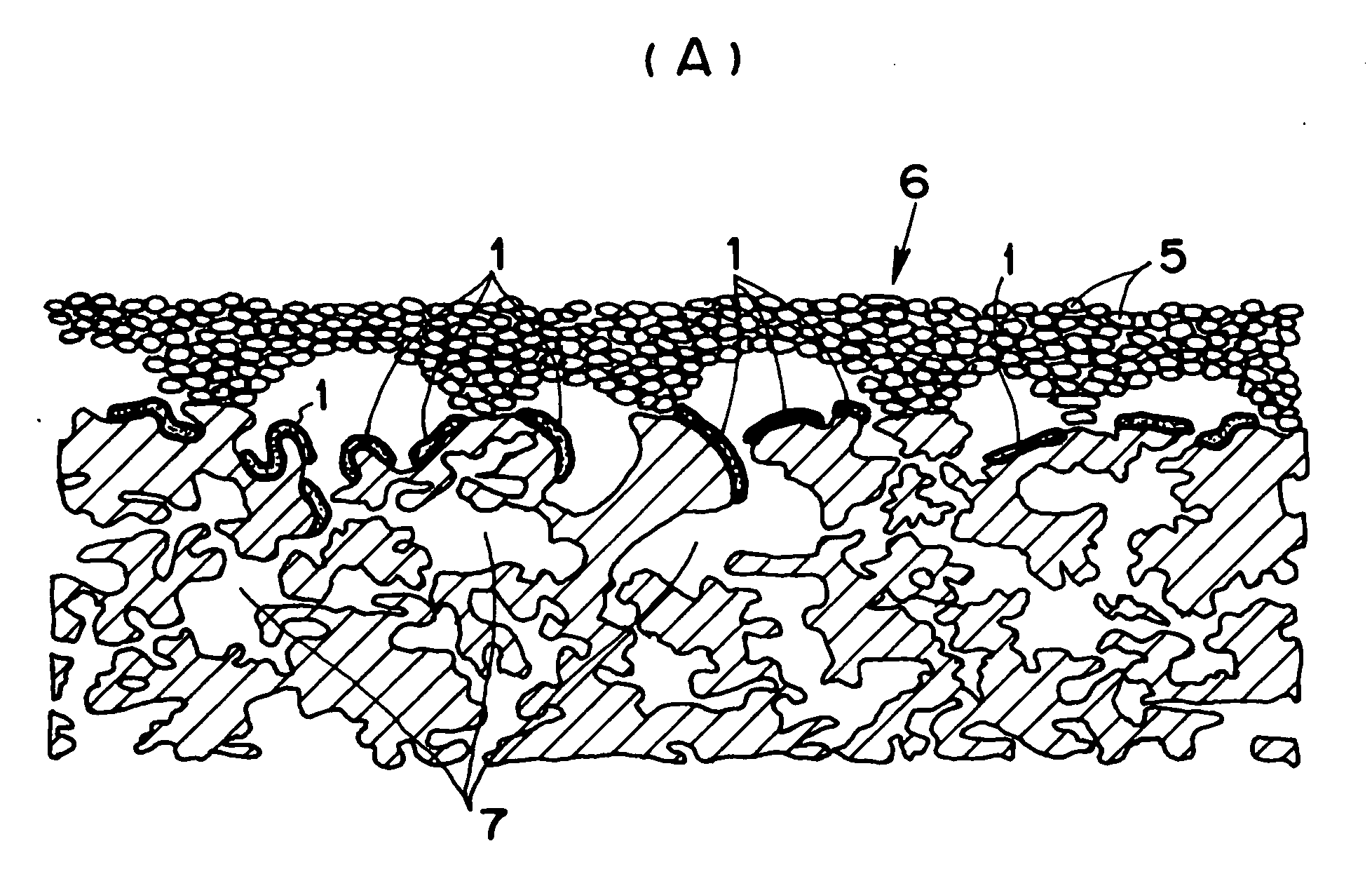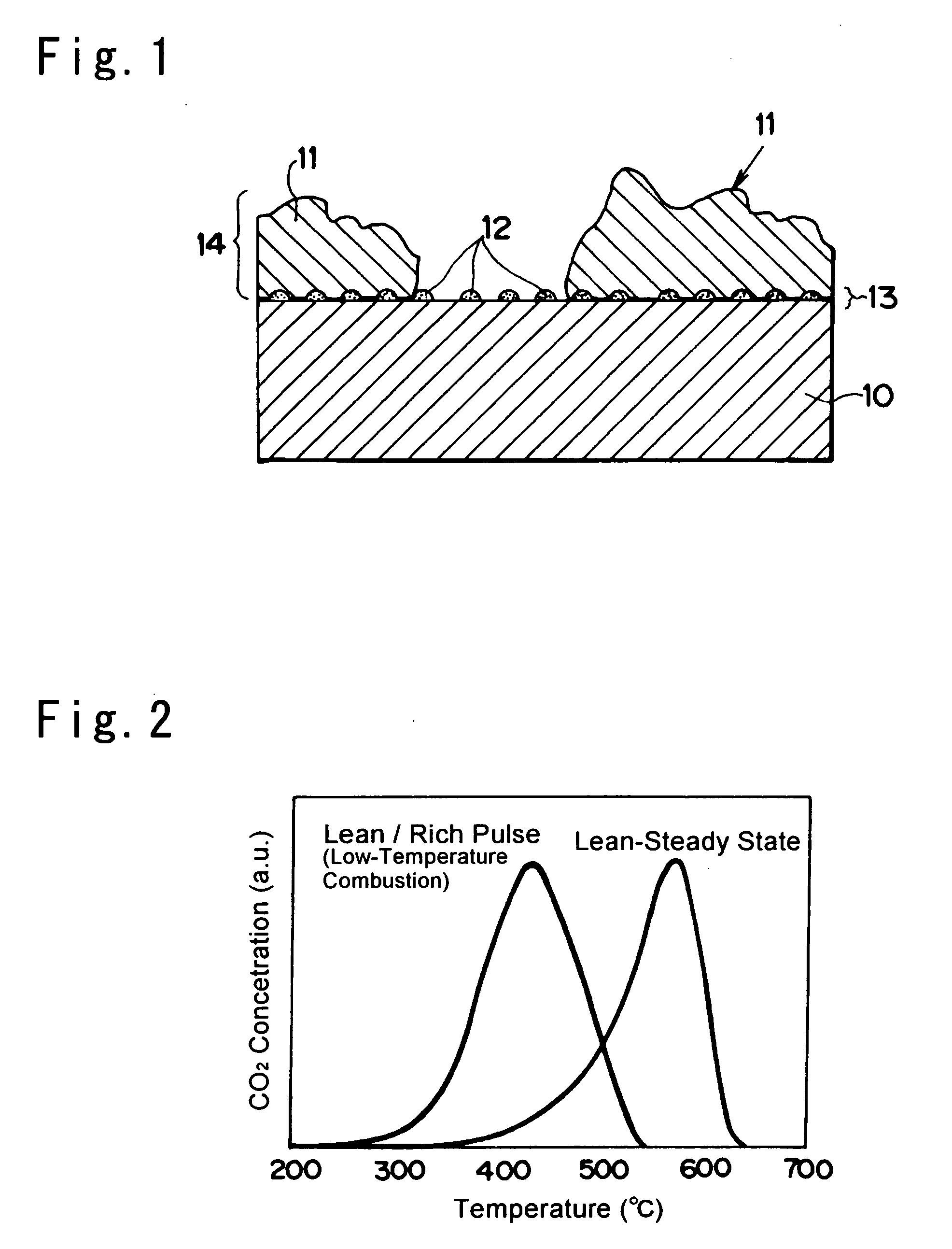Particulate Matter Pruifying Device and Manufacturing Method thereof
a pruifying device and particle technology, applied in physical/chemical process catalysts, metal/metal-oxide/metal-hydroxide catalysts, separation processes, etc., can solve the problem of catalyst may not always be carried densely on the surface of the filter substrate, and the activation region is limited within the range of several nm, so as to prevent excessive accumulation of particulate matter
- Summary
- Abstract
- Description
- Claims
- Application Information
AI Technical Summary
Benefits of technology
Problems solved by technology
Method used
Image
Examples
example 1
[0047]First of all, 2 liters of cordierite for the filter substrate was dipped into an aqueous solution prepared by dissolving 70 gram of metallic alkoxide such as aluminum alkoxide (aluminum tri-sec-butoxide, to be abbreviated as “ASBD” hereinafter) into 4 liters of a nonpolar solvent of cyclohexane. After lifting the cordierite substrate from the solution, extra solution was blown off, and then the cordierite substrate was dried and sintered. As a result, alumina was produced on the cordierite substrate homogeneously.
[0048]Then, particle CeZrO4 as the active oxygen producing fine particles was adsorbed to the cordierite substrate where alumina was separated out, by the complex ion adsorption method. Specifically, in order to prepare a complex ionic solution as a mixed liquid of zirconium and cerium, 0.05 mols of oxynitrate zirconium and cerium nitrate were collected individually, and dissolved in 4 liters of distilled water. Then, 118 g of ammonium dihydrogen citrate, and 61 g of ...
example 2
[0060]First of all, 136 g of benzalkonium chloride was dissolved in 4 liters of distilled water. Then, a filter substrate of cordierite was dipped in the prepared aqueous solution and left for about 30 minutes.
[0061]Apart from above, in order to prepare a complex ionic solution as a mixed liquid of zirconium and cerium, 0.05 mols of oxynitrate zirconium and cerium nitrate were collected individually, and dissolved in 4 liters of distilled water. Then, 118 g of ammonium dihydrogen citrate, and 61 g of ammonium citrate tribasic were added into the solution.
[0062]After lifting the filter substrate from the solution of benzalkonium chloride, extra solution was blown off. Then, the filter substrate was dipped in the solution of oxynitrate zirconium and cerium nitrate to adsorb the complex ions. In order to promote the diffusion of the solution, the filter substrate was moved up and down in the solution, and this absorption process was continued for one hour. As a result, zirconium comple...
PUM
| Property | Measurement | Unit |
|---|---|---|
| distance | aaaaa | aaaaa |
| diameter | aaaaa | aaaaa |
| temperature | aaaaa | aaaaa |
Abstract
Description
Claims
Application Information
 Login to View More
Login to View More - R&D
- Intellectual Property
- Life Sciences
- Materials
- Tech Scout
- Unparalleled Data Quality
- Higher Quality Content
- 60% Fewer Hallucinations
Browse by: Latest US Patents, China's latest patents, Technical Efficacy Thesaurus, Application Domain, Technology Topic, Popular Technical Reports.
© 2025 PatSnap. All rights reserved.Legal|Privacy policy|Modern Slavery Act Transparency Statement|Sitemap|About US| Contact US: help@patsnap.com



